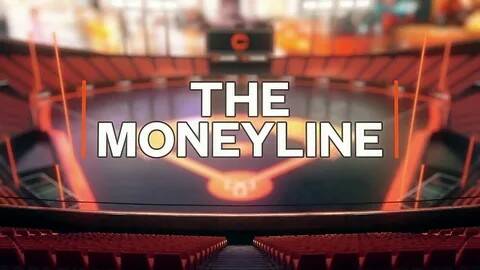
Betting the moneyline is a popular type of sports betting where you simply wager on which team or individual will win a particular game or event. It is one of the simplest and most straightforward forms of sports betting, especially for beginners.
When you bet the moneyline, you are not concerned with point spreads or margins of victory. Instead, you are solely focused on the outcome of the game or event. Each team or individual is assigned a moneyline odds value that represents the payout associated with a winning bet.
The moneyline odds can be expressed in different formats, such as American odds (+/-), fractional odds, or decimal odds, depending on your location and the sportsbook you are using. Here’s how each format typically works:
- American odds: The moneyline odds are presented as either a positive (+) or negative (-) number. A negative number indicates the favorite, and it shows how much you would need to bet to win $100. For example, if the moneyline is -150, you would need to wager $150 to win $100. A positive number indicates the underdog and represents how much you would win if you bet $100. For example, if the moneyline is +200, a $100 bet would yield a $200 profit.
- Fractional odds: The moneyline odds are presented as a fraction. The numerator represents the potential profit, while the denominator represents the amount you need to bet. For example, if the moneyline is 3/1, a $1 bet would yield a $3 profit. If the moneyline is 1/2, you would need to bet $2 to win $1.
- Decimal odds: The moneyline odds are presented as a decimal number. The number represents the total amount you would receive for a winning bet, including your original stake. For example, if the moneyline is 2.50, a $1 bet would yield a total payout of $2.50, including your initial $1 stake.
When betting the moneyline, you simply choose the team or individual you believe will win the game, and if they do, your bet is considered a winner. The amount you win depends on the moneyline odds associated with your selection.
It’s important to note that in some cases, particularly in lopsided matchups, the moneyline odds for the favorite can be quite low, meaning you would need to bet a substantial amount to win a meaningful profit. Conversely, betting on underdogs with high moneyline odds can yield significant payouts with smaller wagers if they win.
Contents
American odds
American odds, also known as moneyline odds, are a common way of presenting betting odds in the United States. They are typically used for sports betting and indicate the potential profit or loss on a bet based on a $100 wager.
Here’s how American odds work:
- Positive (+) odds: Positive odds indicate the potential profit on a $100 bet. For example, if the odds are +200, it means that a $100 bet would yield a $200 profit. In other words, if you bet $100 and win, you would receive a total of $300 ($100 initial stake + $200 profit).
- Negative (-) odds: Negative odds represent the amount you need to bet in order to win $100. For example, if the odds are -150, it means you would need to wager $150 to win $100. In this case, if you bet $150 and win, you would receive a total of $250 ($150 initial stake + $100 profit).
It’s important to note that American odds can be used for both underdogs and favorites. Positive odds are typically associated with underdogs, while negative odds are usually assigned to favorites. However, this is not always the case, as odds can vary depending on the sportsbook and the specific matchup.
To calculate the potential payout for an amount other than $100, you can use a simple formula:
- For positive odds: Potential profit = (bet amount / 100) * odds For example, if the odds are +200 and you bet $50, the potential profit would be: (50 / 100) * 200 = $100.
- For negative odds: Potential profit = (bet amount / odds) * 100 For example, if the odds are -150 and you bet $75, the potential profit would be: (75 / 150) * 100 = $50.
Remember that the actual amount you receive will include your initial stake if the bet is successful.
It’s important to understand how to interpret American odds when engaging in sports betting, as they are widely used in the United States. However, it’s also worth noting that other odds formats, such as decimal odds or fractional odds, may be used in different parts of the world or by certain sportsbooks.

Fractional odds
Fractional odds, also known as British odds, are a traditional way of representing betting odds primarily used in the United Kingdom and Ireland. They are presented as a fraction, with the numerator representing the potential profit and the denominator indicating https://mintmobile.co.za the amount that needs to be wagered.
Here’s how fractional odds work:
- For odds expressed as a fraction greater than 1 (e.g., 3/1 or 5/2): The numerator represents the potential profit, and the denominator represents the amount you need to bet. For example, if the odds are 3/1, it means that for every $1 you bet, you could potentially win $3 in profit. So if you bet $10 at 3/1 odds and win, your total payout would be $40 ($30 profit + $10 initial stake).
- For odds expressed as a fraction less than 1 (e.g., 1/4 or 2/5): The numerator represents the potential profit, and the denominator represents the amount you need to bet. For example, if the odds are 1/4, it means that for every $4 you bet, you could potentially win $1 in profit. So if you bet $20 at 1/4 odds and win, your total payout would be $25 ($5 profit + $20 initial stake).
Fractional odds can also be expressed as “odds-on” or “odds-against”:
- Odds-on: When the numerator is smaller than the denominator (e.g., 1/4 or 2/5), it indicates that the potential profit is smaller than the amount bet. These odds are more likely to occur, and a winning bet would result in a smaller profit.
- Odds-against: When the numerator is larger than the denominator (e.g., 3/1 or 5/2), it indicates that the potential profit is greater than the amount bet. These odds are less likely to occur, and a winning bet would result in a larger profit.
To calculate the potential payout for fractional odds, you can use the following formula:
Potential payout = (bet amount * numerator) / denominator
For example, if the odds are 5/2 and you bet $50, the potential payout would be: (50 * 5) / 2 = $125.
It’s worth noting that fractional odds are not as commonly used outside of the UK and Ireland. Other odds formats, such as American odds or decimal odds, are more prevalent in many other parts of the world.
Decimal odds
Decimal odds, also known as European odds, are a popular format for presenting betting odds in many countries, including Europe, Australia, and Canada. They represent the potential payout per unit wagered, including both the initial stake and the profit.
Here’s how decimal odds work:
- The decimal number represents the total amount that would be returned for a winning bet, including the initial stake. For example, if the odds are 2.50, it means that for every unit wagered, you would receive a total of 2.50 units in return if the bet is successful. This includes your initial stake, so the profit would be 1.50 units.
To calculate the potential payout for decimal odds, you can use the following formula:
Potential payout = bet amount * decimal odds
For example, if you bet $50 at odds of 2.50, the potential payout would be: 50 * 2.50 = $125. This includes the initial stake of $50 and a profit of $75.
Decimal odds are often considered easier to understand and calculate compared to other odds formats. They provide a clear indication of the total amount that would be returned for a winning bet, making it simpler to calculate potential winnings.
It’s important to note that decimal odds already include the initial stake in the displayed number, so you don’t need to add it separately when calculating the potential payout.
Decimal odds are widely used in online sports betting platforms and are increasingly gaining popularity in various regions around the world due to their simplicity and clarity.